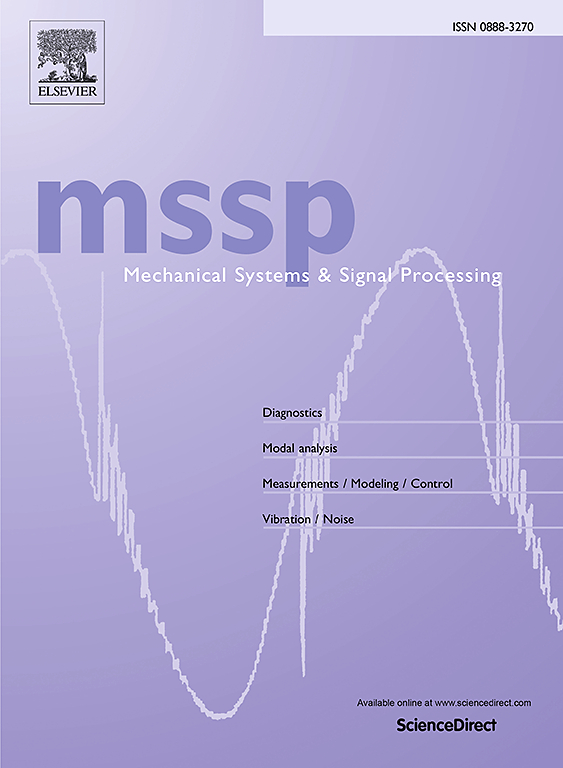A degradation assessment method for industrial robot in flexible manufacturing systems based on multiple physics-informed neural network
IF 8.9
1区 工程技术
Q1 ENGINEERING, MECHANICAL
引用次数: 0
Abstract
With the expansion of industrial robot applications, degradation monitoring is valuable for manufacturing systems. The article develops a framework to predict the remaining useful life (RUL) of industrial robots, which is called Physical-Informed Channel-Attention-Inception-Unet (PICAIU), it can be used to evaluate the reducer degradation. In order to improve the training efficiency and prediction accuracy, it embeds knowledge of robot dynamics and servo controller into a data-driven neural network, adding channel-attention mechanism to the Inception-Unet to fuse motion and power feature, thereby obtaining accurate motor current estimates. Based on the aging experimental data of robot harmonic gear transmission, relevant life curves have been established, which can be used to evaluate other robots. We conducted a series of experiments to discuss the robustness and generalization of the proposed method. The ablation experiments showed that the introduction of physical information constraints improved training efficiency and convergence accuracy, effectively alleviating the sample size requirement of channel self-attention mechanism. The RUL prediction error was 26% lower than the best baseline model. Under the same batch size conditions, PICAIU only need 42% training rounds of the corresponding baseline model to let fitting error be lower than 10%, saving training time and sample costs significantly. Through cross validation with two robots, when generalizing from a rich dataset to poor dataset, the prediction error is only 6.4%, which has potential prospects in real industrial scenarios with relatively few samples.
基于多物理信息神经网络的柔性制造系统工业机器人退化评估方法
随着工业机器人应用的不断扩大,退化监测在制造系统中具有重要的应用价值。本文提出了一个预测工业机器人剩余使用寿命(RUL)的框架,即物理信息通道-注意-启动-单元(PICAIU),该框架可用于评估减速器退化。为了提高训练效率和预测精度,将机器人动力学和伺服控制器知识嵌入到数据驱动的神经网络中,在Inception-Unet中加入通道注意机制,融合运动和功率特征,从而获得准确的电机电流估计。基于机器人谐波齿轮传动的老化实验数据,建立了相应的寿命曲线,可用于评价其他机器人。我们进行了一系列的实验来讨论所提出的方法的鲁棒性和泛化。消融实验表明,物理信息约束的引入提高了训练效率和收敛精度,有效缓解了通道自注意机制对样本量的要求。RUL预测误差比最佳基线模型低26%。在相同批大小的条件下,PICAIU只需要对相应基线模型进行42%的训练轮数,即可使拟合误差低于10%,显著节省了训练时间和样本成本。通过两个机器人的交叉验证,从富数据集泛化到差数据集时,预测误差仅为6.4%,在样本相对较少的真实工业场景中具有潜在的应用前景。
本文章由计算机程序翻译,如有差异,请以英文原文为准。
求助全文
约1分钟内获得全文
求助全文
来源期刊

Mechanical Systems and Signal Processing
工程技术-工程:机械
CiteScore
14.80
自引率
13.10%
发文量
1183
审稿时长
5.4 months
期刊介绍:
Journal Name: Mechanical Systems and Signal Processing (MSSP)
Interdisciplinary Focus:
Mechanical, Aerospace, and Civil Engineering
Purpose:Reporting scientific advancements of the highest quality
Arising from new techniques in sensing, instrumentation, signal processing, modelling, and control of dynamic systems
 求助内容:
求助内容: 应助结果提醒方式:
应助结果提醒方式:


